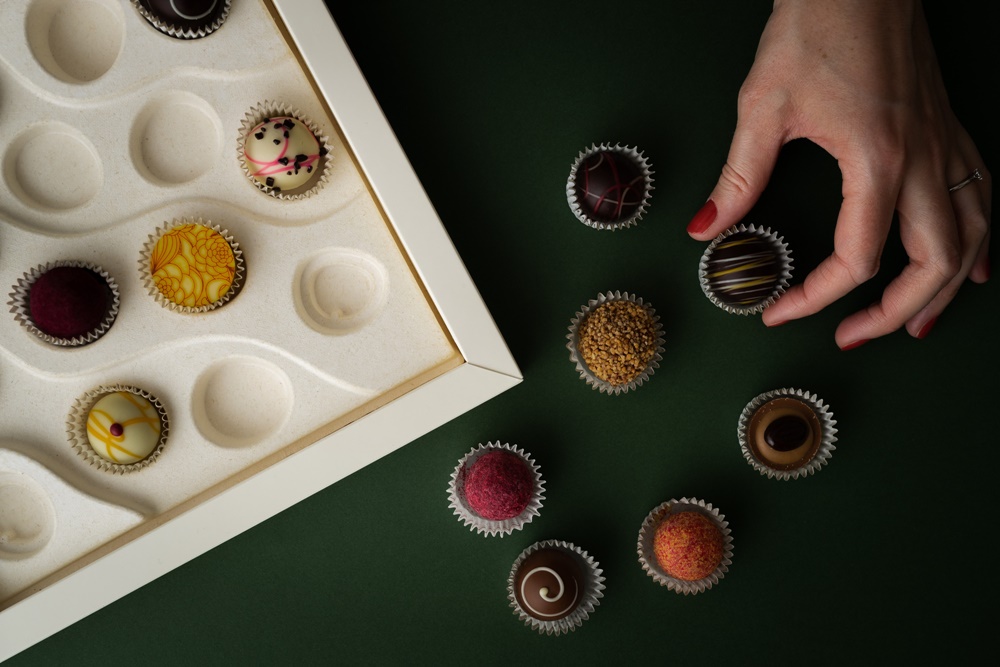NEWS
Holmen Iggesund invests in the future of packaging
The aim at Holmen Iggesund has always been to work closely with brands and other partners across the value chain. To advance this further, the company has created a new department. Showcasing how its collaborative approach will help meet customer needs, the Future Packaging department is developing packaging with exciting new fibre-based concepts.
“We see that brand owners are looking for new ways of packaging,” says Hein van den Reek, Director Future Packaging at Holmen Iggesund. “They want their packaging to be more sustainable. One way to do that is to replace fossil materials like plastics. We see it as an obligation to help them. To do this, we need to be closer to the brands, we need to understand what they are doing – and also understand the whole value chain so we can offer brands innovative solutions that meet their needs.”
The new department consists of dedicated specialists with a wide range of capabilities. It includes colleagues with expertise in various segments such as cosmetics, food and electronics, as well as people who understand how Original Equipment Manufacturers (OEMs) and converters work. Where necessary, expertise in areas such as tooling, die cutting and barriers will be brought in.
“If the brand, the machine makers, the material suppliers and the designers work together, your path to market shortens enormously,” says van den Reek. “Brands have business targets to find sustainable materials and need to meet their consumers’ demands. We want to offer them that route in a structured way. We will help them find the right converters and the right machines to make their dreams feasible.”
To show brands how this collaborative approach can speed up the process, Holmen Iggesund has already developed prototype solutions with external partners. In 2021, it developed Conic, a wood-based formable premium packaging solution for the cosmetics industry. And now, Holmen Iggesund and its partners have produced the chocolate box Choco.
Made entirely from renewable materials, the chocolate box consists of an outer box and an insert tray, with various cavities at different levels for individual chocolate pieces.
The insert tray is made from Mouldable, which has a much lower CO2 footprint than it’s plastic predecessor. Replacing plastic trays with Mouldable would lower the CO2 footprint by 90% in terms of raw material.
The box was developed through collaboration with converter Goerner Formpack, tool maker HP Molded Fiber Advanced Tooling Solutions, and the Future Lab and Partners. The outer box is made with Holmen Iggesund’s Invercote Creato 400 board. The insert tray is made by Goerner Formpack through their wet moulding process using Holmen Iggesund’s Imould material, a food-safe material that consists of long and short virgin fibres.
“Today, most chocolate boxes contain plastics trays,” says van den Reek. “But our prototype shows that we can completely substitute the plastic with renewable materials, and still have something that’s a beautiful design using different shaping techniques. And of course, we could do this for cosmetics, electronics and many other applications.”
Goerner Formpack are pioneers in pulp packaging and visionaries for a world without plastic. “We all need packaging, but we have to think about what kind of packaging we use, where it comes from and where the end-of-life cycle is, which we believe should be ongoing,” says Managing Director Elisabeth Goerner. “Our main driver for the project was to develop a pulp tray for direct food contact that would remove single use plastic from customers’ packaging departments.”
With an eye on another aspect of the future, Holmen Iggesund specifically brought tool maker HP in on the Choco box project. HP used 3D printing to make the wet moulding tool that Goerner Formpack used to make the chocolate box insert tray.
“3D printing is a new way of working with tooling,” says van den Reek. “It’s important because it can be more cost effective and sustainable than using traditional tools. By making the wet moulding tool for the Choco box this way, we are showing that the industry is looking ahead.”
HP is focused on delivering technology that accelerates the transition from single use plastic to sustainable solutions like moulded fibre. “With the packaging material transition in front of us, we need all partners in the value chain to create and support developments to enhance the capabilities and performance of the moulded fibre industry,” says Dick Huizinga, Business Development and Sales Lead EMEA, HP Molded Fiber Advanced Tooling Solutions. “Fibre packaging will see huge growth over the coming years as the use of plastic decreases. And the major players in the pulp and paper industry like Holmen Iggesund and the premium brands need to cooperate to enable the plastic packaging conversion.”
The new Future Packaging department is using prototypes like Conic and the Chocobox to show how solutions that can be applied to many different industries can be achieved through collaboration.
“We want to make the packaging world better and make meaningful, purposeful packages that don’t pollute, and can be recycled. We are willing to listen and develop concepts together. And we will keep on developing new prototypes to show that we understand what our customers are dealing with,” says van den Reek.




